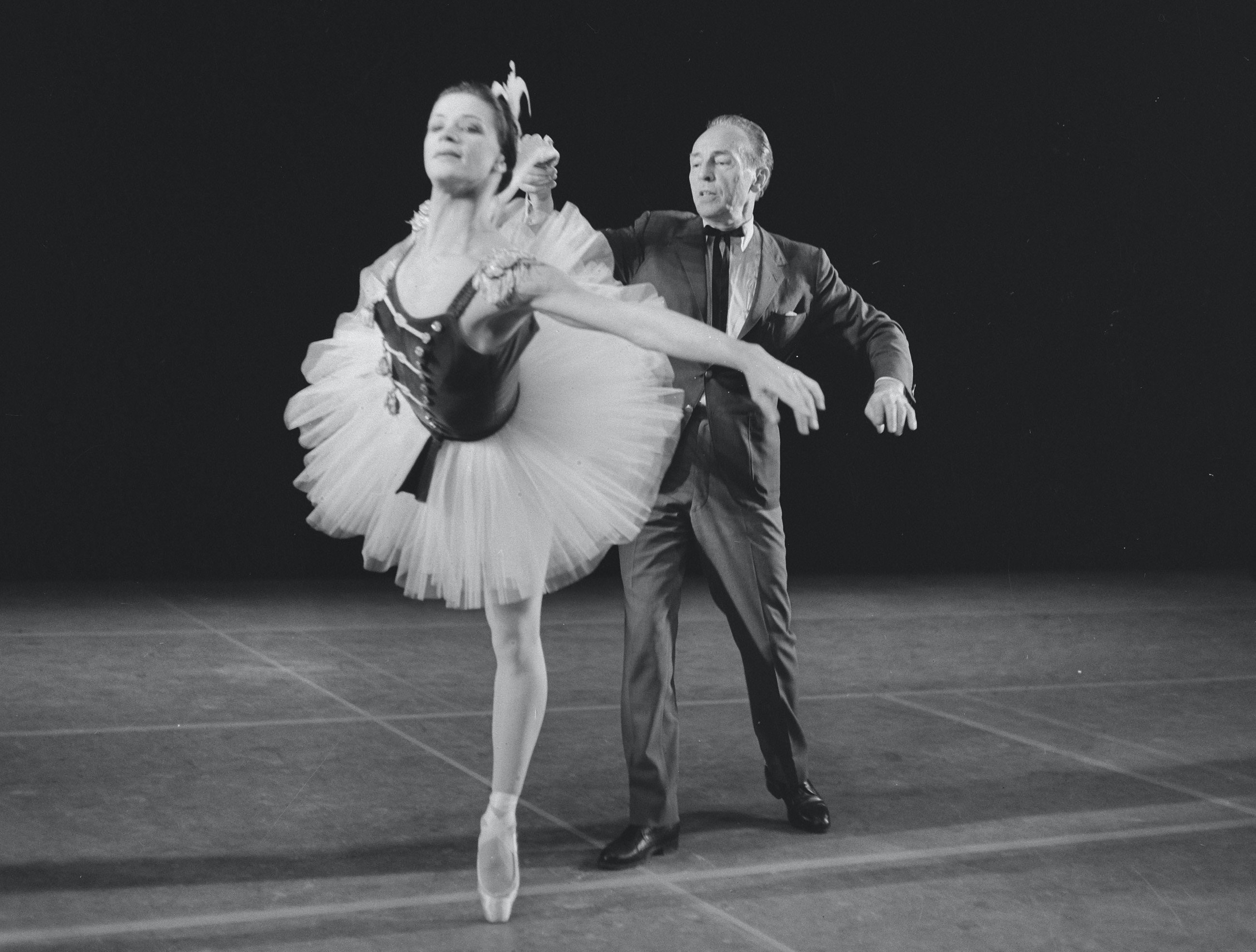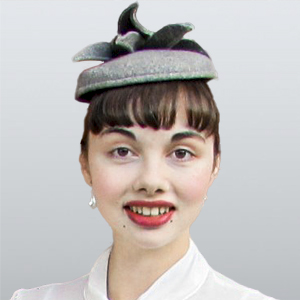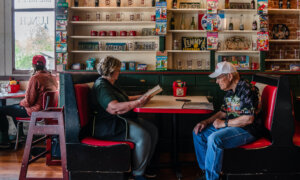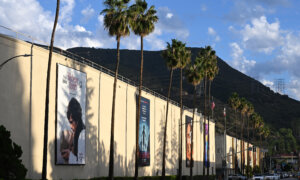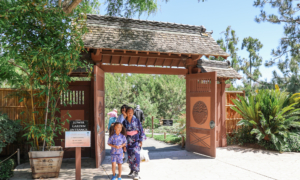Commentary
“The Nutcracker” is an annual tradition which has eclipsed “A Christmas Carol,” Charles Dickens’s perennial classic which popularized the secular celebration of Christmas. Here in Southern California, there seems to be one “Nutcracker” per square mile when you count all the studios, performing arts centers, touring groups, and professional companies. With the mania for this show which dominates the ballet world for half the year, it seems like “The Nutcracker” has been around forever.
However, this was not the case. While the ballet was written in the 1890s, it wasn’t popularized in the United States until the 1950s. The first time most Americans had the chance to see the full ballet was in 1958, when CBS’s “Playhouse 90” broadcast a color special of it choreographed by George Balanchine and performed by the New York City Ballet dancers on Christmas Day. This 90-minute special is on YouTube in color, complete with the original commercials. It is not only an entertaining film, but a fascinating glimpse into the evolution of “The Nutcracker.”
History of the Ballet
“The Nutcracker” debuted in Saint Petersburg on Dec. 17, 1892. The music was written by Piotr Ilych Tchaikovsky, and the choreography was created by Marius Petipa and his assistant, Lev Ivanov. The director of the Imperial Theaters, Ivan Alexandrovitch Vsevolojsky, commissioned this work after the success of Tchaikovsky and Petipa’s collaboration on “The Sleeping Beauty” in 1890. Neither the composer nor the choreographer liked Vsevolojsky’s idea of basing the libretto on E.T.A. Hoffman’s “The Nutcracker and the Mouse King,” but they eventually accepted it because of the director’s persistence. It was performed with all the splendor that the old Russian royalty could lavish. As if the two-act ballet wasn’t enough of a show, it appeared on a double feature with a one-act opera also written by Tchaikovsky, the little remembered “Iolanthe.” Although the czar liked the ballet, it received harsh criticism and was not deemed a success.
“The Nutcracker” was revived at the Marinsky Theatre by Alexander Gorsky in 1919, in which version a teenaged George Balanchine would play the Nutcracker Prince. In the first few decades of the 20th century, many versions of the ballet were staged around the world, most of which changed the order, the music, the characters, the length, or the plot considerably. The first production of “The Nutcracker” in the United States was a one-act condensed version performed by the Ballet Russe de Monte Carlo in New York City on Oct. 17, 1940. The first full-length production of “The Nutcracker” in the United States was performed by the San Francisco Ballet in December 1944. It was a huge success and has been an annual tradition ever since.
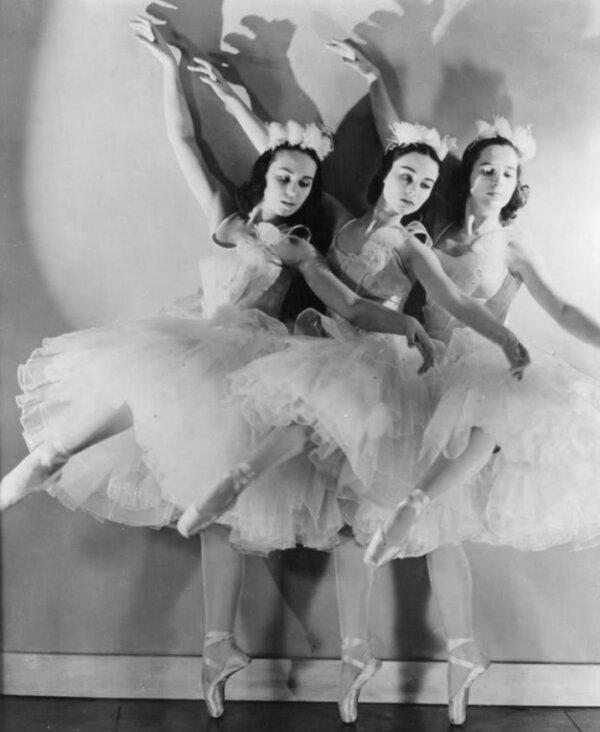
Photo of the Ballet Russe de Monte Carlo performing "The Nutcracker" in 1940. (Public Domain)
Ten years later, George Balanchine performed his own version of “The Nutcracker” at New York City Ballet, with Osage Indian prima ballerina Maria Tallchief as the Sugarplum Fairy. Balanchine’s version quickly became a sensation and made the ballet popular in the United States. It has been performed in New York live every year since then, and most other American versions of the ballet are based on it. Although he stuck closer to the original libretto than most other versions up to that point, he notably inserted an entr’acte from the score of “Sleeping Beauty” which sounds very similar to “The Nutcracker,” put “The Dance of the Sugarplum Fairy” in a different place, and replaced certain parts which were originally danced with stage action. In 1957, a one-hour reduction of Balanchine’s “Nutcracker” was broadcast live on the CBS television program “The Seven Lively Arts,” starring Maria Tallchief, but apparently no copy of this survived. The next year, “Playhouse 90” broadcast the full ballet in color, and this is the earliest filmed version of Balanchine’s version, or any other version as far as I know, in existence.
Playhouse 90: The Nutcracker
What’s even better than reading about history is seeing it for yourself. Watching “Playhouse 90: The Nutcracker” is a fun, nostalgic program and an entertaining transportation to the realm of Nutcracker Past. The main way this television special differs from most live stage performances is the fact that it is narrated by actress June Lockhart. Her commentary before, during, and after the dancing, as if telling the story to a little girl, helps this story along for those not familiar with the tale and the format of ballet. It’s basically the complete ballet, although the music is much faster than usual to make the runtime shorter. Even Balanchine’s addition from “Sleeping Beauty” is included.
The little girl is Marie instead of Clara, played by 10-year-old Bonnie Bedelia. The ballet takes place in Nuremberg on Christmas Eve at the home of the Silberhaus family, the alternate name for the Stahlbaums. They have two children, Marie and Fritz, since very few productions since the debut have featured the older sister, Louise. The magical and slightly sinister godfather Drosslmeyer is played by none other than Balanchine himself. His assistant is his nephew, a boy around Marie’s age (Robert Maiorano), who later plays the Nutcracker Prince in Marie’s dream. That is, if it is a dream, since this version doesn’t make it entirely clear whether the growing of the tree and other furniture, the battle between the mice and the toy soldiers, and Marie’s journey to the Land of Sweets is a figment of her imagination or real magic.
After floating into another realm on her bed, Marie sees magical snowflakes dance in the forest, but there is no Snow Queen or King, as in many later productions, just a corps de ballet of beautiful ballerinas. Then, she and the prince travel through the Land of Nowhere to the Land of Sweets, where they meet the majestic Sugarplum Fairy, the prima ballerina, played by Diana Adams. She welcomes them to her magical realm, which features very colorful décor á la the 1950s, and entertains them with her subjects, dancing sweets.
These divertissements, or short dances, are now identified by the different countries they represent more than the sweets from those regions, but the costumes and staging in this production reflect what the dancers are supposed to be. The Spanish dancers are in brown for chocolate instead of red; Arabian is an exotic solo by a black man (Arthur Mitchell) who starts the dance drinking coffee, instead of a suggestive belly dance with scantily clad women; the Trepak (Russian) is performed by male dancers in striped bodysuits to look like peppermint, rather than a generic Russian folk dance; and Chinese is performed in gold costumes to look like golden tea. Interestingly, the Grand Pas de deux is not a duet between the Sugarplum Fairy and her Cavalier or the Nutcracker. Instead of one partner, she performs this dance with the four leading men from the divertissements, Spanish, Arabian, Russian, and Chinese. It’s a very unique take on this dance!
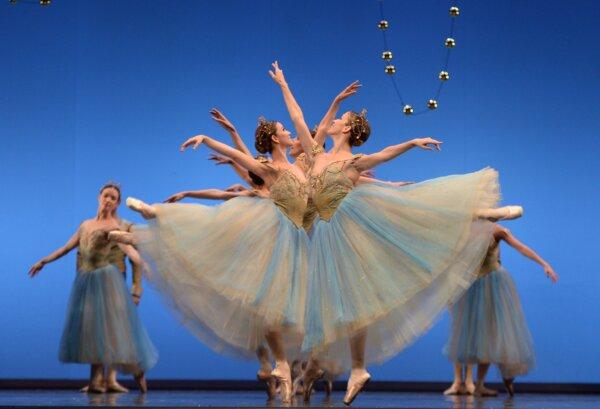
Dancers with the Spanish National Dance Company perform during a general rehearsal of the ballet production "The Nutcracker" at the Maestranza Theater in Sevilla on January 8, 2020. (Cristina Quicler/AFP via Getty Images)
Magic and Charm
Some productions of “The Nutcracker” claim that they are new takes on the old classic to draw crowds. I usually take issue with such procedures in ballet and opera, since I believe classical works should be performed as traditionally as possible. However, “The Nutcracker” is a case of something which is rarely performed as its writers intended. Many versions of the ballet may be standard, following a similar style, or even traditional, having been performed the same way many years in a row, but almost no production is close to the original.
Most sources will say that the average American production of this ballet is based on Balanchine’s version, but it’s very interesting to see how far they have strayed from that. Of course, Balanchine changed the ballet a little for this television production, but it offers insight into his basic ideas in the first few years of production.
The 1892 production was an amazing spectacle, from all accounts, offering a grandiose production with lavish sets and costumes. Few companies today can rival such splendor without the royal budget to produce it. In lieu of opulence, one can hope to capture childhood magic and the nostalgic charm of a bygone era. The 1958 television broadcast does a lovely job of that. It’s a wonderful show for the family to watch, whether you are ballet fans or not, and it may just introduce you to the lovely world of ballet!


